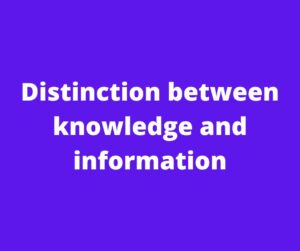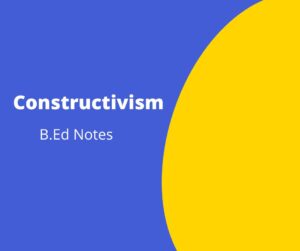The psychosocial development theory was introduced by Erik Erikson in 1970. The theory is also known as Erikson’s Theory of psychosocial development.
This theory is built upon Freud’s theory of psychosocial development. Erikson’s theory describes personality development in Eight stages. He also called these eight stages critical periods of life.
Each stage of psychosocial development is characterized by a psychosocial crisis. As the individual attempts to resolve this crisis, a healthy personality evolves.
Each time a crisis is resolved it adds a new dimension to the personality of the individual. The stages are in sequence and if a crisis remains unresolved in one particular stage it becomes difficult to solve a similar crisis at a later stage.
Personality development depends on the person’s ability to interact with the environment and resolve the crisis. Each time the crisis is resolved or unresolved leaves a lasting impact on the person’s self-concept.
Stages of Erikson’s Psychosocial Development
Stage-I Trust v/s Mistrust ( birth-2 years)
- The physical and emotional care and warmth given to newborn babies develop in him/her a sense of trust or mistrust.
- If the infant experiences a predictable care behaviour he/she develops a sense towards the caregiver and the immediate surroundings.
- If a care behaviour is not predictable and dependable the infants develop a sense of mistrust.
- Children whose dependency needs in early infancy are not met show general mistrust towards others (teacher, peer group) in later stages of life. On the other hand, children who develop a sense of trust generalize new situations in life.
Stage II Autonomy versus shame and doubt (2-3 years)
- During this period the child does not depend on the caregiver for physical movement. The child is able to crawl, sit, walk and run and experiences personal autonomy.
- The child likes to explore the surroundings by himself/herself. Complete freedom is not allowed as it may be unsafe for the child. Therefore, both freedom and restraint are in play during this period.
- The feelings of independence are the positive aspects of his stage but there can be negative emotional development too.
- For example, the child likes to explore and exercise his/her independence by exploring the house, drawing out objects and throwing them away.
- If the child is restrained or punished harshly, he/she may go through the experience of personal shame. On the other hand, if the caregiver overindulges the child, it may result in a self-indulged personality.
- There is a tussle between the child’s sense of autonomy and sense of self-control at this stage.
- If the child is punished harshly for exploring the house or given harsh toilet training or overindulged during this period, Erikson indicates that such experience led to personal shame and doubt and resulted in an impaired sense of self-control
- Therefore, parents and caregivers need to organize the structure of the environment for the child to develop a sense of autonomy and self-control.
Stage-III Initiative versus guilt (3-6 years)
- This period is marked by the child’s increased desire to explore new environments and investigate new challenges. Erikson called this the development of the initiative.
- During this period child gets into a task of which the parents do not approve. They become very inquisitive about their surroundings and ask many questions. They would want to help you with your work.
- Erikson believes that if the child is discouraged from taking up the initiative, the child will develop a sense of guilt about his/her tendency to explore and investigate.
- Children in this age group are expected to take up new challenges like going to school, learning to read and write and other activities.
- Therefore, parents and caregivers should encourage the initiative-taking behaviour of children as it is critical for the child’s future development.
Stage-IV Industry versus Inferiority 96-12 years)
- Erikson believed, that during this period, children attempted to achieve mastery in whatever they do. He termed this a sense of competence or Industry.
- As elementary students child learn to read, write and compute, they now start using these skills outside school activities like reading a comic book
- They now spend more time with others away from home.
- They get into many activities like riding bicycles, cricket and other activities. In this stage of development, children want to succeed in what they do. Therefore, the term industry.
- If the child is not encouraged to develop a sense of industry during this stage, Erikson believed that they would instead develop a sense of inferiority and feel about themselves as failures in what they do.
- Therefore, it is important that children get appreciation and recognition for what they do from parents and teachers.
- Recent studies show that peer group rejection is carried over from elementary to high school affect academic achievement and lead to adjustment problem in later life.
Stage-V Identity versus role confusion (13-18 years)
- This stage occurs during adolescence. The goal of this stage is to develop social identity and occupational identity.
- In this stage, they think and understand different ways. Physically go through several changes. They are confused about their identity and role in the society.
- They experiment with new ideas and relationships that they are not sure about their attitudes, beliefs and values.
- Erikson thought that adolescents are in the psychosocial moratorium, a period of delay that is granted to someone who is not ready to meet obligations.
- Adolescence searches for identity they often imitate people whom they admire. They would like to dress like their hero/heroine.
- Having not sorted out who he/she is the adolescents find it difficult to make a career choice.
Stage-VI Intimacy versus Isolation (20-30 Years)
In this stage, the major crisis is the development of a true and intimate relationship. Erikson thought that those who fail to experience this intimacy will develop a sense of isolation and tends to avoid relationship and make commitments. On the other hand success in the stage will develop the virtue of love.
Stage VII: Generativity versus Stagnation (35-65 years)
In this stage, an individual tries to develop a sense of generativity, which he defined as creativity or productivity, otherwise, they experience stagnation.
Stage-VIII Integrity versus Despair (65 years onwards)
Those who adapted to the ups and downs of life develop a sense of stratification and acceptance. Healthy resolution in the early stages of a crisis develops a sense of integrity and unhealthy resolution leads to despair
Educational Implication of Erikson’s Theory
Implications of Erikson’s Theory of Psychosocial Development are-
- Understanding Developmental Stage: Erikson’s theory identifies 8 stages of human social development, each stage is characterised by a specific conflict or crisis that individuals must navigate to achieve healthy development. Educators can use the knowledge of the psychosocial developmental stages to meet the needs and challenges of their students. This understanding helps in developing instruction, providing appropriate support and creative learning environment that addresses the needs of students at different stages of development.
- Fostering Identity Formation: Erikson’s theory places a significant emphasis on identity formation, particularly during adolescence. Educators can play a crucial role in supporting students’ exploration of identity by creating a safe and inclusive classroom environment. They can facilitate discussion, encourage self-reflection, and provide opportunities for students to explore their interests, values and beliefs. By supporting students’ identity development, educators can promote a positive sense of self and enhance engagement in learning.
- Supporting Autonomy and Initiative: According to Erikson’s psychosocial development theory, preschool-age children go through the stage of autonomy versus shame and doubt. To support autonomy, educators can create an environment that allows for age-appropriate decision-making, problem-solving and independent exploration. Encouraging students to take initiative, make choices and learn from their experiences fosters a sense of competence and self-confidence. Educators can provide opportunities for hands-on activities, encourage creativity, and allow for student-led projects to promote autonomy and initiative.
- Nurturing Industry and Competence: The stage of industry versus inferiority, which occurs during middle childhood, focuses on the development of competence and self-confidence. Educators can support children’s sense of industry by providing clear expectations, offering constructive feedback and recognizing their efforts and achievements. Promoting a growth mindset and fostering a sense of mastery in various subjects and skills can enhance children’s motivation and engagement in learning.
- Facilitating Generativity and Purpose: In this theory, Generativity versus stagnation is a stage that occurs during adulthood. This stage involves a focus on contributing to society and leaving a positive legacy. Educators can facilitate opportunities for adult learners to explore their passions, contribute their knowledge and expertise and engage in community service or mentoring activities. By promoting a sense of purpose and providing avenues for giving back, educators can support adults in their ongoing learning and personal growth.
- Encouraging Lifelong Learning: Erikson’s theory underscores the importance of continued growth and development throughout life. Educators can foster a culture of lifelong learning by promoting curiosity, critical thinking and intellectual engagement. By modelling enthusiasm for learning, providing opportunities for ongoing education and professional development, and integrating real-world relevance into the curriculum, educators can instil a love for learning that extends beyond formal education.
- Resolving Developmental Challenges: Erikson’s theory emphasises the resolution of developmental challenges or crises. Educators can play a supportive role in helping students navigate these challenges. By providing a caring and nurturing environment, offering guidance and support, and facilitating opportunities for self-reflection and personal growth, educators can help students overcome obstacles and develop resilience.
In conclusion, Erikson’s theory of psychosocial development has significant educational implications. Educators can utilize this theory to tailor instruction, create supportive learning environments, and address the developmental needs of students at various stages. By fostering identity formation, supporting autonomy and initiative, nurturing competence and industry, and facilitating generativity and purpose, educators can contribute to the holistic development of an individual



